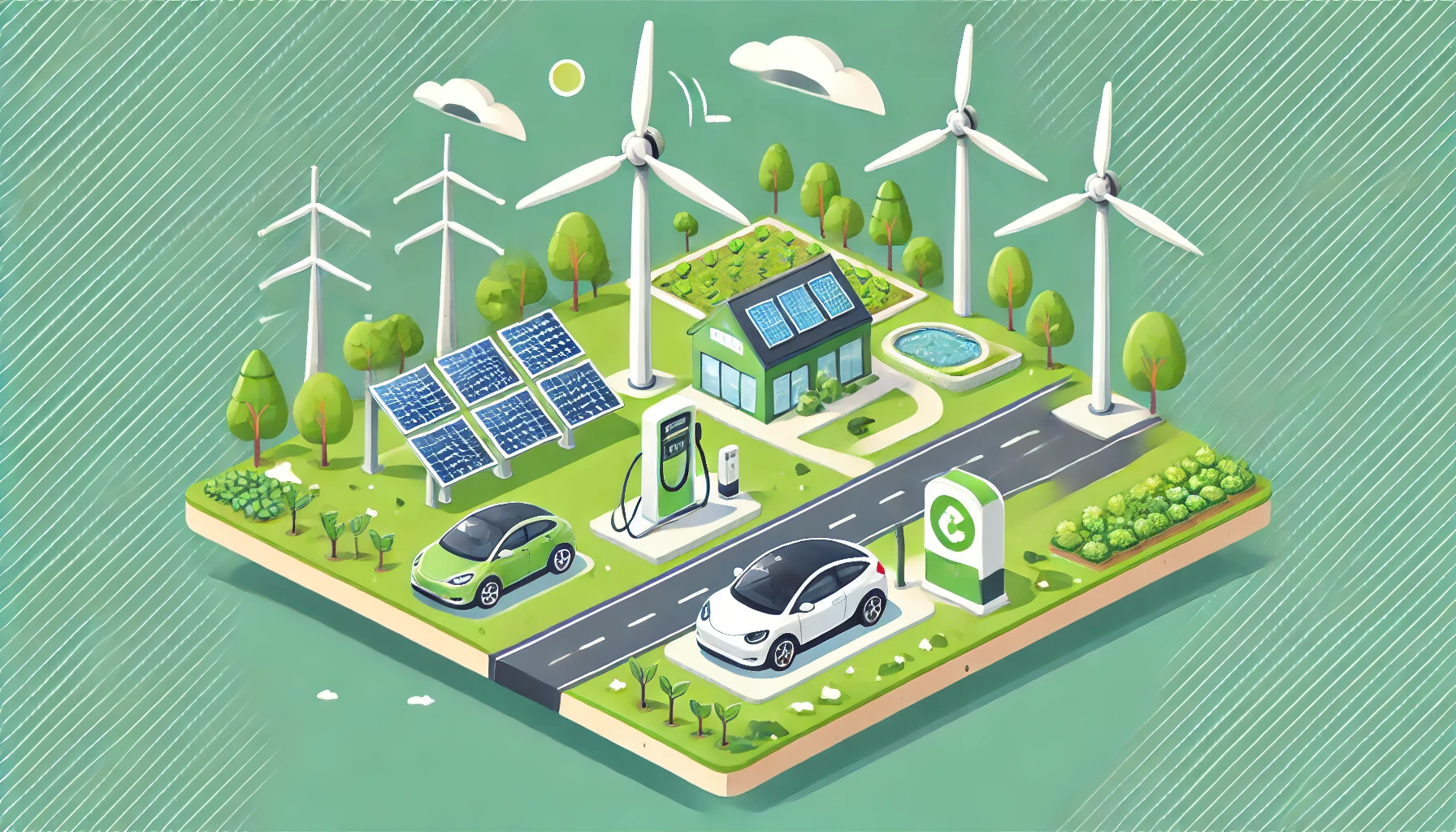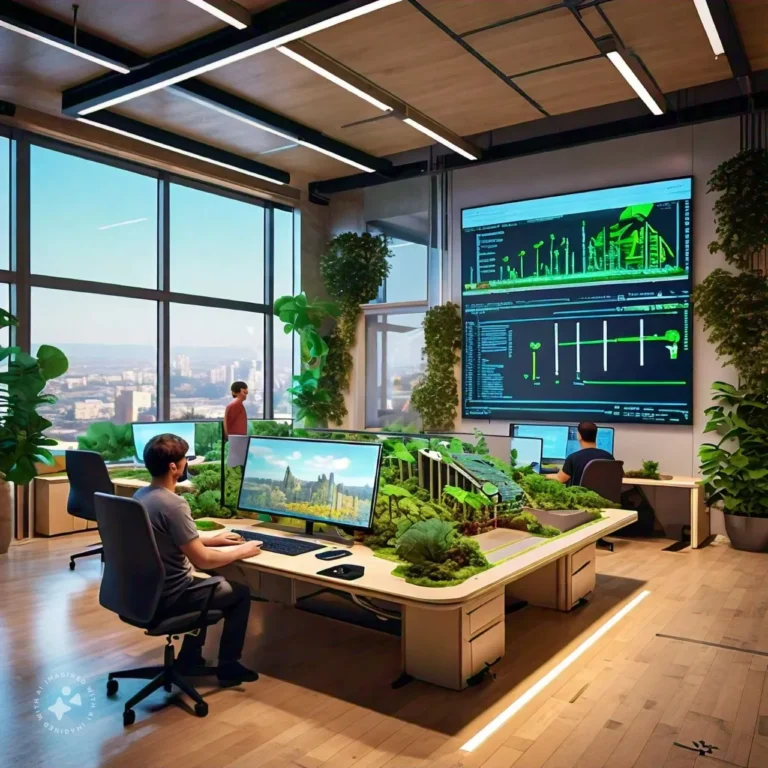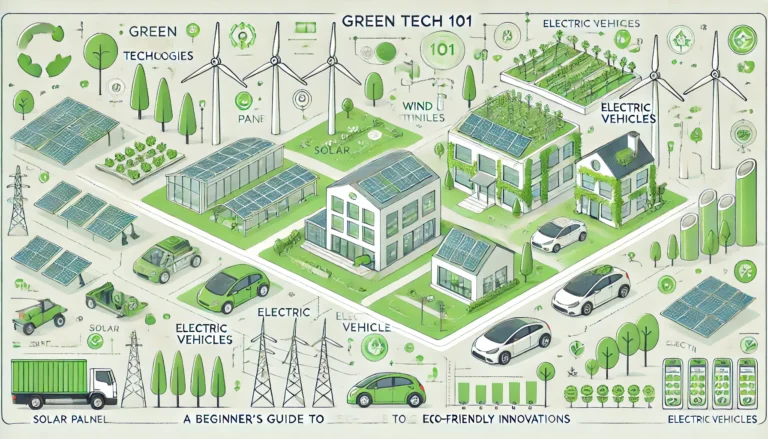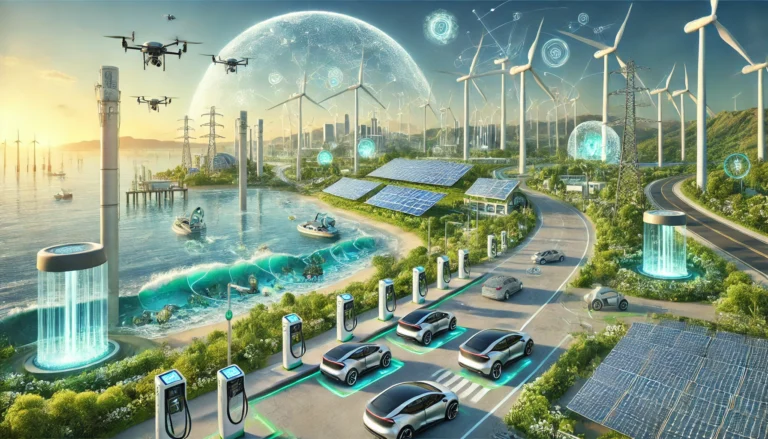How Green Technology Is Reducing Environmental Impact
What Is Green Technology?
At its core, green technology, or “clean technology,” refers to any innovation designed to limit the negative environmental impact. The primary focus is on sustainability, which means using resources in a way that doesn’t harm the environment for future generations. This approach spans various industries, including energy, transportation, agriculture, and manufacturing.
Why Is Green Technology Important?
In recent decades, the impact of human activities on the environment has become more evident. Climate change, pollution, and deforestation are just a few of the pressing issues we face today. Green technology aims to address these problems by creating solutions that are more eco-friendly and sustainable. Essentially, it’s about doing more with less and leaving the Earth in a better condition.
The Role of Renewable Energy in Green Technology
One of the key players in green technology is renewable energy. Traditional energy sources like coal and oil contribute massively to carbon emissions, which fuel climate change. Renewable energy, on the other hand, comes from sources that are naturally replenished, such as:
- Solar Energy: Capturing energy from the sun using solar panels.
- Wind Energy: Using turbines to convert wind into electricity.
- Hydropower: Generating energy from moving water.
- Geothermal Energy: Harnessing heat from beneath the Earth’s surface.
How Renewable Energy Reduces Carbon Emissions
Renewable energy sources produce little to no greenhouse gases, making them essential for reducing our carbon footprint. For example, a solar-powered home emits significantly fewer emissions compared to one powered by coal. This shift from fossil fuels to renewable energy is key to combating climate change.
Sustainable Transportation: Electric Vehicles (EVs)
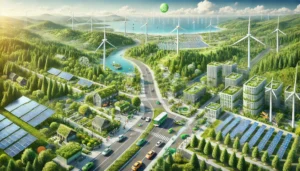
Transportation is another sector that heavily contributes to air pollution. Green technology in this field has introduced electric vehicles (EVs) as a cleaner alternative to gasoline-powered cars. Unlike conventional cars, EVs run on electricity and emit zero tailpipe emissions.
Advantages of Electric Vehicles
- Zero Emissions: EVs don’t release harmful pollutants into the air, helping to improve urban air quality.
- Energy Efficiency: EVs are generally more efficient than their gasoline counterparts.
- Lower Operating Costs: Electricity tends to be cheaper than gasoline, and EVs have fewer moving parts, leading to lower maintenance costs.
Energy-Efficient Buildings: The Future of Sustainable Living
Have you ever heard the term “green building”? It refers to structures designed to be environmentally responsible and resource-efficient throughout their life cycle. Green technology plays a big part in this through:
- Insulation: Reducing energy use by keeping buildings cooler in summer and warmer in winter.
- Smart Thermostats: Optimizing energy consumption by adjusting the temperature based on occupancy and time of day.
- Energy-Efficient Lighting: Using LED bulbs that consume far less electricity than traditional incandescent bulbs.
How Green Buildings Lower Environmental Impact
Green buildings help reduce water and energy consumption, lower carbon emissions, and minimize waste production. This approach not only saves resources but also cuts down on operating costs in the long run, making it a win-win for both the environment and your wallet.
Eco-Friendly Manufacturing Practices
The manufacturing sector is notorious for its environmental impact, but green technology is making waves here too. Sustainable manufacturing aims to reduce waste, conserve resources, and lower emissions by:
- Using Renewable Energy: Factories are increasingly powered by solar or wind energy.
- Recycling Materials: Minimizing the need for raw materials by recycling what has already been used.
- 3D Printing: A more efficient method of production that uses fewer materials and generates less waste.
How Waste Reduction Benefits the Environment
Less waste means fewer landfills and less pollution. By recycling materials, we cut down on the need for mining and deforestation, preserving natural habitats and biodiversity.
Water Conservation Technologies
Water is one of our most precious resources, and conserving it is a key goal of green technology. Innovations in this area include:
- Smart Irrigation Systems: Using sensors to water crops only when necessary, reducing waste.
- Water Recycling: Systems that treat wastewater so it can be reused for non-drinking purposes.
- Low-Flow Fixtures: Faucets and showerheads that use less water without sacrificing performance.
How Water Conservation Helps the Planet
Water scarcity is becoming a major issue in many parts of the world. By using water more efficiently, we ensure that this vital resource is available for future generations. Plus, conserving water often reduces the energy needed for pumping and treating it, further reducing carbon emissions.
Waste Management: Reducing, Reusing, and Recycling
Managing waste efficiently is another major goal of green technology. The three Rs—reduce, reuse, and recycle—are at the heart of this approach. Innovations in waste management include:
- Composting: Turning organic waste into nutrient-rich compost for soil.
- Recycling Technologies: Advanced sorting and processing techniques that make it easier to recycle different materials.
- Waste-to-Energy: Converting waste into energy, reducing the need for landfills.
The Impact of Green Waste Management
Effective waste management reduces the amount of trash sent to landfills, lowers pollution, and can even generate clean energy. It’s a perfect example of how green technology can turn a problem into a solution.
The Future of Green Technology
The future of green technology is bright, with innovations continuing to emerge at a rapid pace. From carbon capture technology that removes CO2 from the atmosphere to biofuels that offer cleaner alternatives to gasoline, the possibilities are endless. As governments and businesses worldwide prioritize sustainability, green technology will play an even more significant role in shaping a cleaner, greener future.
Conclusion
Green technology is more than just a trend—it’s a necessary step toward a sustainable future. From renewable energy to waste management, these innovations are transforming how we live, work, and interact with the planet. As we continue to embrace eco-friendly technologies, we not only reduce our environmental impact but also pave the way for future generations to live in harmony with the Earth.
FAQs
1. What is the main goal of green technology?
The main goal is to reduce the negative environmental impact of human activities, promoting sustainability and conserving resources for future generations.
2. How does green technology help combat climate change?
By reducing carbon emissions, promoting renewable energy, and creating more efficient systems, green technology helps slow the pace of climate change.
3. What are some examples of green technology?
Examples include solar panels, electric vehicles, wind turbines, energy-efficient buildings, and advanced recycling technologies.
4. Is green technology affordable for the average person?
While some green technologies, like solar panels, have higher upfront costs, they often save money in the long run through lower energy bills and reduced maintenance costs.
5. How can individuals contribute to the green technology movement?
Individuals can support green tech by using energy-efficient appliances, reducing water waste, recycling, and adopting eco-friendly transportation options like electric vehicles or bicycles.

